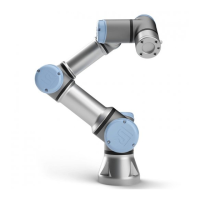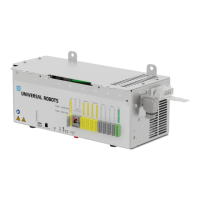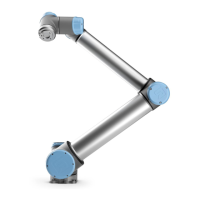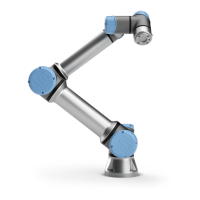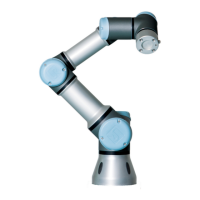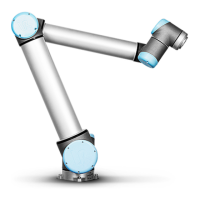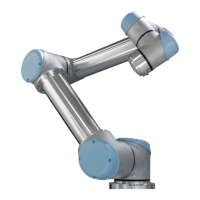2 Safety-related Functions and Interfaces
2.1 Introduction
UR robots are equipped with a range of built-in safety-related functions as well
as safety-related electrical interfaces to connect to other machines and additional
protective devices. Each safety function and interface is monitored according to EN
ISO13849-1:2008 (see Chapter 8 for certifications) with Performance Level d (PLd).
DANGER:
Use of safety configuration parameters different from those de-
fined by the risk assessment conducted by the integrator can result
in hazards that are not reasonably eliminated or risks that are not
sufficiently reduced.
See chapter 10 in part II for configuration of the safety-related features, inputs, and
outputs in the user interface. See chapter 5 for descriptions on how to connect
safety devices to the electrical interface.
NOTE:
1. Use and configuration of safety-related functions and inter-
faces must be done according to the risk assessment that the
integrator conducts for a specific robot application, see sec-
tion 1.7 in chapter 1.
2. If the robot discovers a fault or violation in the safety system,
e.g. one of the wires in the emergency stop circuit is cut, a
position sensor is broken, or a limit of a safety-related func-
tion has been violated, a Stop Category 0 is initiated. The
worst case time from an error occurs to the robot is stopped
is listed at the end of this chapter. This time should be taken
into account as part of the risk assessment conducted by the
integrator.
The robot has a number of safety-related functions that can be used to limit the
movement of its joints and of the robot Tool Center Point (TCP). The TCP is the
center point of the output flange with the addition of the TCP offset.
The limiting safety-related functions are:
Version 3.4.5
Copyright © 2009–2017 by Universal Robots A/S. All rights reserved.
I-11 UR5/CB3

